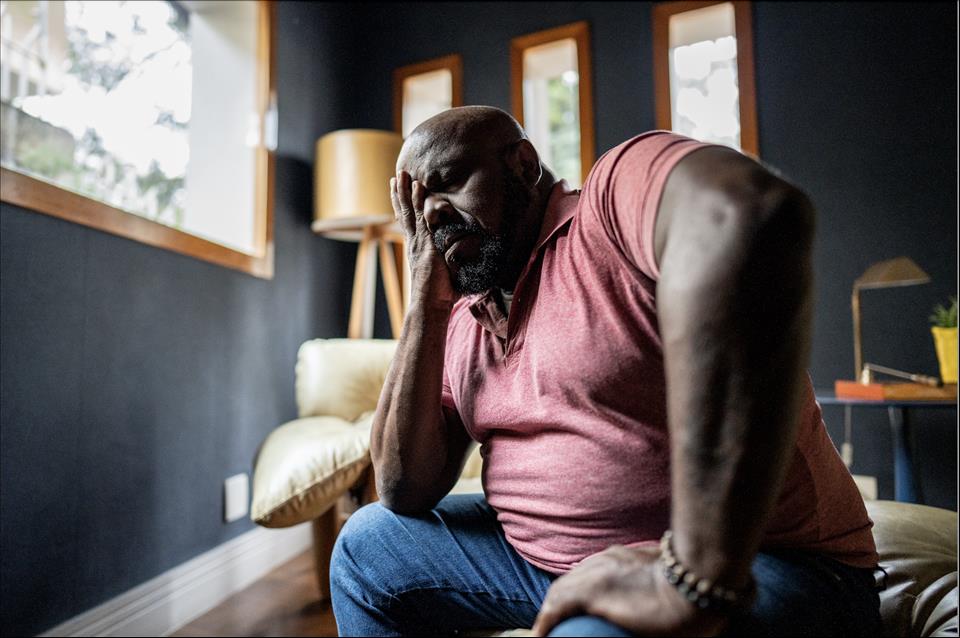Australians Are In More Pain And Our New Data Shows It's Not Just Due To Ageing
Pain is a serious public health issue and can have devastating consequences for individuals, affecting their ability to have fulfilling relationships, work or look after kids.
The new findings come from the latest Household, Income and Labour Dynamics in Australia (HILDA) Survey Statistical Report, released today. I am part of the team that collects and analyses the data – here's what we found.
How we measured painThe HILDA survey has been following the same people every year since 2001, which makes it possible to examine how the lives of Australians have changed across several aspects.
Each year, we survey roughly 16,000 individuals aged 15 and older on various topics, including how often they experience bodily pain, and to what degree it affects their day-to-day life.
In the survey, we used two questions to construct a measure of overall bodily pain.
First, we ask respondents to report how much bodily pain they have had during the past four weeks: no bodily pain, very mild, mild, moderate, severe or very severe.
The second question asks all respondents how much pain interfered with their normal work (including both outside the home and housework) during the same period: not at all, slightly, moderately, quite a bit or extremely.
We then combined the scores from these two questions to form an overall bodily pain measure ranging from 0 (no bodily pain) to 100 (severe bodily pain). This was the“bodily pain score”.
Gender makes a differenceThe new data shows almost 79% of women and 74% of men had experienced at least some physical pain in the previous four weeks.
Women reported more pain than men – and it was more likely to affect their day-to-day activities.
For example, one in four men (26.2%) said they had no pain, compared to one in five women (21.5%).
The proportion of women who rated their pain as“severe” or“very severe” (8%) was also higher than men (5.1%).
The more extreme the pain, the more it restricted general home or work duties. About 2.4% of women and 1.3% of men reported that pain interfered“extremely” with their day-to-day activities.
Age, health and wealth also play a roleAs expected, older age groups report more pain than younger people.
Whereas just 3.4% of people aged 25–34 reported that pain interferes“quite a bit” in daily duties, among those aged 65 and older this jumped to 14.6%.
We also found that higher levels of education and income are associated with less pain.
In terms of occupation, bodily pain tended to be most severe among labourers, followed by machinery operators and drivers.
The least pain was reported by those who worked as managers or professionals.
Pain is also much worse among people with a chronic health condition, including diabetes, arthritis and any type of cancer.
Health behaviours matter as well. For example, smokers report greater pain than non-smokers.
Pain is increasingMost striking is the rising trend in average bodily pain over the past two decades. This increase is consistent with a rising prevalence of pain globally .
Age is strongly linked to the development of chronic conditions. So, one main reason why pain increases over time is due to population ageing .
But even after adjusting for population ageing, we found reported bodily pain increased by about 5.6% among women and 4.8% among men between 2001 and 2023. This suggests other factors may be behind the rise in pain.
So, what are some of these factors?
Evidence suggests people have become more likely to report that they have pain.
But there is also a growing prevalence of chronic conditions in Australia, which are strongly linked to pain. Obesity rates have also increased , and we know obesity can increase physical pain , for example by putting more stress on joints.
However, we still need more research to understand what is driving the increase in pain, and how it affects different groups.
The impact of painPain can have a devastating effect on wellbeing and quality of life, with serious flow-on effects. For example, people who experience significant pain are more likely to lose their jobs .
Our analysis can't establish causal relationships. But it does reveal that those who experience severe bodily pain also report substantially worse mental health and lower life satisfaction.
Given these debilitating personal impacts of severe bodily pain – and the costs it puts on our health-care system and economy – reversing the rising trend in pain is imperative.

Legal Disclaimer:
MENAFN provides the
information “as is” without warranty of any kind. We do not accept
any responsibility or liability for the accuracy, content, images,
videos, licenses, completeness, legality, or reliability of the information
contained in this article. If you have any complaints or copyright
issues related to this article, kindly contact the provider above.
Most popular stories
Market Research

- Motif AI Enters Phase Two Of Its Growth Cycle
- 1Inch Unlocks Access To Tokenized Rwas Via Swap API
- Kucoin Presents Kumining: Embodying Simple Mining, Smart Gains For Effortless Crypto Accumulation
- With Seal, Walrus Becomes The First Decentralized Data Platform With Access Controls
- Jpmorgan Product Head Joins GSR Trading MD To Build Institutional Staking Markets
- Innovation-Driven The5ers Selects Ctrader As Premier Platform For Advanced Traders





















Comments
No comment